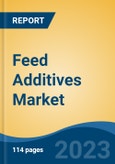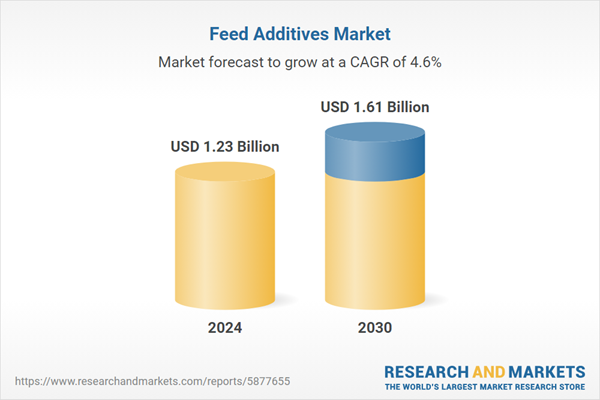Speak directly to the analyst to clarify any post sales queries you may have.
10% Free customizationThis report comes with 10% free customization, enabling you to add data that meets your specific business needs.
Key Market Drivers
Growing Demand of Livestock-Based Products
The global appetite for livestock-based products is steadily increasing as populations grow and dietary habits shift toward high-protein foods. In 2024, global per capita meat consumption reached approximately 36.5 kg, up from 35 kg in 2023. Poultry continues to dominate this rise, accounting for over 50% of the total increase in global meat production. This growing demand for meat, eggs, and dairy has intensified livestock farming practices, creating a stronger need for efficient and performance-enhancing feed additives to support animal health, productivity, and nutrient utilization.Developing regions, particularly in Asia-Pacific, are at the forefront of this growth. Asia alone now consumes around 60% of the world’s poultry meat. Additionally, meat production in developing economies has been expanding at an average annual rate of 4%, with countries like India, Indonesia, and Vietnam witnessing sharp increases in poultry and aquaculture farming. To meet the nutritional requirements of fast-growing animals, producers are increasingly turning to tailored feed additives such as enzymes, probiotics, and amino acids.
Changing consumer preferences and health trends are also contributing to the surge in demand. There has been a notable rise in demand for functional and enriched animal products, with more consumers seeking items like omega-3 fortified eggs and protein-rich dairy. At the same time, global egg consumption per capita has exceeded 160 eggs annually, reflecting the growing reliance on poultry for affordable nutrition. To ensure consistent product quality and animal welfare under intensive production, feed manufacturers are adopting additives that support immunity, digestion, and overall performance.
Environmental and regulatory factors are further influencing feed strategies amid rising livestock output. Livestock is estimated to contribute nearly 18% of global greenhouse gas emissions, prompting calls for more sustainable farming practices. Moreover, the phasing out of antibiotic growth promoters across multiple regions has created an urgent need for alternative solutions. Feed additives like phytases and proteases are gaining attention for their ability to improve nutrient absorption and reduce nitrogen and phosphorus excretion, thus lowering the environmental impact of large-scale animal farming.
Key Market Challenges
Fluctuating Raw Material Prices
Fluctuating Raw Material Prices present a persistent challenge for the global feed additives market, affecting both manufacturers and end-users across the supply chain. The production of feed additives relies heavily on raw materials such as amino acids, vitamins, enzymes, plant extracts, and fermentation-based ingredients - many of which are sensitive to global economic and environmental factors.Volatility in the prices of agricultural commodities, natural extracts, and energy inputs - exacerbated by geopolitical tensions, weather disturbances, or trade restrictions - can disrupt supply and inflate production costs. For instance, the price of key amino acids like lysine and methionine is highly reactive to fluctuations in corn and soybean availability. These price swings make it difficult for feed manufacturers to forecast costs and maintain stable pricing, ultimately deterring smaller farms and feed mills from adopting high-quality or natural additives that may become cost-prohibitive during periods of inflation or scarcity.
Key Market Trends
Rising Adoption of Natural and Clean-Label Additives
Rising Adoption of Natural and Clean-Label Additives is becoming a defining trend in the global feed additives market, as both regulatory authorities and end consumers push for safer and more sustainable animal production. Synthetic growth promoters, especially antibiotics, are being phased out in many regions due to concerns over antimicrobial resistance and food safety. In response, producers are turning to natural alternatives like probiotics, phytogenics, essential oils, organic acids, and algae-based ingredients. These additives not only support animal health and performance but also meet the growing demand for clean-label, antibiotic-free, and responsibly raised meat, dairy, and eggs. With consumers increasingly scrutinizing the sourcing and composition of food products, the inclusion of natural feed additives throughout the supply chain helps producers align with market expectations while maintaining productivity, profitability, and brand trust in an evolving global food landscape.Key Market Players
- Bluestar Adisseo Co., Ltd
- Koninklijke DSM N.V.
- BASF SE
- Nutreco N.V.
- Cargill, Incorporated
- Danisco Animal Nutrition & Health
- Alltech, Inc.
- The Archer-Daniels-Midland Company
- Chr. Hansen Holding A/S
- Evonik Industries AG
Report Scope:
In this report, Global Feed Additives market has been segmented into the following categories, in addition to the industry trends, which have also been detailed below:Feed Additives Market, By Ingredient Type:
- Antibiotics
- Vitamins
- Enzyme
- Antioxidants
- Probiotics
- Others
Feed Additives Market, By Livestock:
- Poultry
- Ruminants
- Swine
- Aquatic Animals
- Others
Feed Additives Market, By Form:
- Dry
- Liquid
Feed Additives Market, By Region:
- North America
- United States
- Mexico
- Canada
- Europe
- France
- Germany
- United Kingdom
- Spain
- Italy
- Asia-Pacific
- China
- India
- South Korea
- Japan
- Australia
- South America
- Brazil
- Argentina
- Middle East & Africa
- South Africa
- Saudi Arabia
- UAE
Competitive landscape
Company Profiles: Detailed analysis of the major companies in global Feed Additives market.Available Customizations:
With the given market data, the publisher offers customizations according to a company’s specific needs. The following customization options are available for the report.Company Information
- Detailed analysis and profiling of additional market players (up to five).
This product will be delivered within 1-3 business days.
Table of Contents
Companies Mentioned
- Bluestar Adisseo Co., Ltd
- Koninklijke DSM N.V.
- BASF SE
- Nutreco N.V.
- Cargill, Incorporated
- Danisco Animal Nutrition & Health
- Alltech, Inc.
- The Archer-Daniels-Midland Company
- Chr. Hansen Holding A/S
- Evonik Industries AG
Table Information
| Report Attribute | Details |
|---|---|
| No. of Pages | 188 |
| Published | August 2025 |
| Forecast Period | 2024 - 2030 |
| Estimated Market Value ( USD | $ 1.23 Billion |
| Forecasted Market Value ( USD | $ 1.61 Billion |
| Compound Annual Growth Rate | 4.5% |
| Regions Covered | Global |
| No. of Companies Mentioned | 10 |









